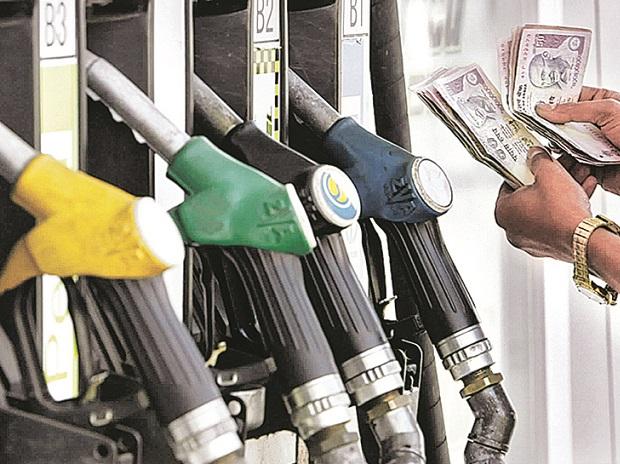[ad_1]
Oil companies are selling petrol at a profit of Rs 10 per litre but retail prices haven’t been reduced as they recoup past losses and make up for a Rs 6.5 a litre loss on diesel, a report said.
State-owned Indian Oil Corporation (IOC), Bharat Petroleum Corporation Ltd (BPCL) and Hindustan Petroleum Corporation Ltd (HPCL) have for the past 15 months not revised petrol and diesel prices in line with the cost. They have times of low oil prices to recoup losses incurred when rates were high.
“Post record high losses of Rs 17.4 per litre on petrol and Rs 27.7 a litre diesel for the week ended June 24, 2022, margins for petrol are estimated at a positive Rs 10 per litre for Q3 (October-December 2022) while diesel losses too have likely narrowed to Rs 6.5 a litre for the same quarter,” ICICI Securities said in a report.
The three fuel retailers haven’t changed petrol and diesel prices since April 6, 2022, despite input crude oil prices rising from USD 102.97 per barrel that month to USD 116.01 in June and falling to USD 78.09 this month.
Holding prices when input cost was higher than retail selling prices led to the three firms posting net earnings loss. They posted a combined net loss of Rs Rs 21,201.18 crore during April-September despite accounting for Rs 22,000 crore announced but not paid LPG subsidy.
“Coupled with gross refining margins (GRMs) of USD 10.5-12.4 per barrel (net of windfall tax and estimated inventory loss), we do believe operating earnings for the three companies will likely swing back to the black post the record loss seen in Q2,” ICICI Securities said.
It estimated earnings before interest, taxes, depreciation, and amortization (EBITDA) of Rs 2,400 crore for IOC in the October-December quarter, Rs 1,800 crore for BPCL and Rs 800 crore for HPCL.
But they may end up posting net losses. IOC may end up with a net loss of Rs 1,300 crore while HPCL may post Rs 600 crore loss. BPCL may break even, it said.
International oil prices have been turbulent in the last couple of years. It dipped into the negative zone at the start of the pandemic in 2020 and swung wildly in 2022 — climbing to a 14-year high of nearly USD 140 per barrel in March 2022 after Russia invaded Ukraine, before sliding on weaker demand from top importer China and worries of an economic contraction.
But for a nation that is 85 per cent dependent on imports, the spike meant adding to already firming inflation and derailing the economic recovery from the pandemic.
So, the three fuel retailers, who control roughly 90 per cent of the market, froze petrol and diesel prices for the longest duration in at least two decades. They stopped daily price revision in early November 2021 when rates across the country hit an all-time high, prompting the government to roll back a part of the excise duty hike it had effected during the pandemic to take advantage of low oil prices.
The freeze continued into 2022 but the war-led spike in international oil prices prompted a Rs 10 a litre hike in petrol and diesel prices from mid-March before another round of excise duty cut rolled back all of the Rs 13 a litre and Rs 16 per litre increase in taxes on petrol and diesel effected during the pandemic.
That followed the current price freeze that began on April 6 and still continues.
The oil ministry is pushing for compensation for the three retailers to make up for the losses they incurred.
(Only the headline and picture of this report may have been reworked by the Business Standard staff; the rest of the content is auto-generated from a syndicated feed.)
[ad_2]
Source link



